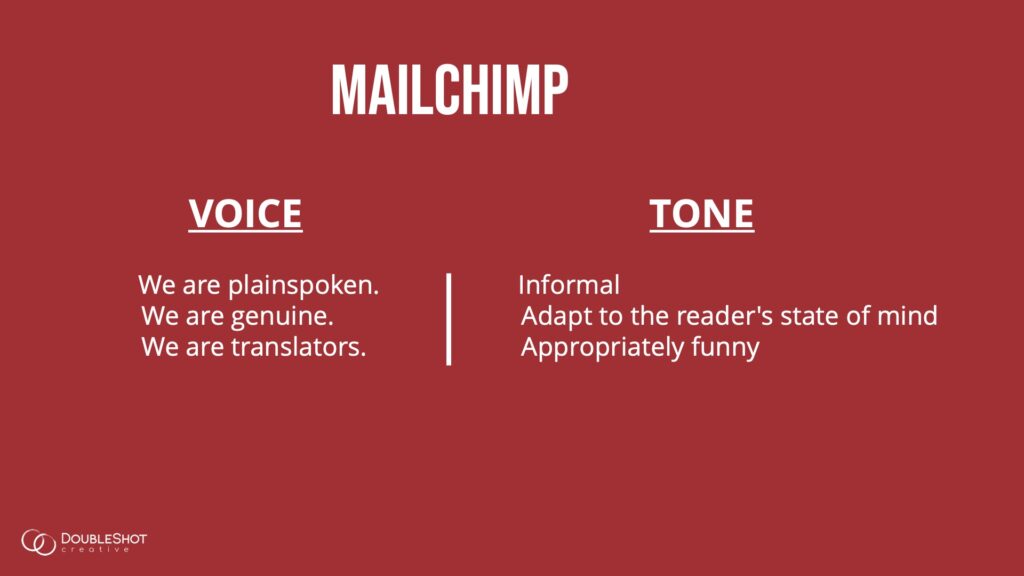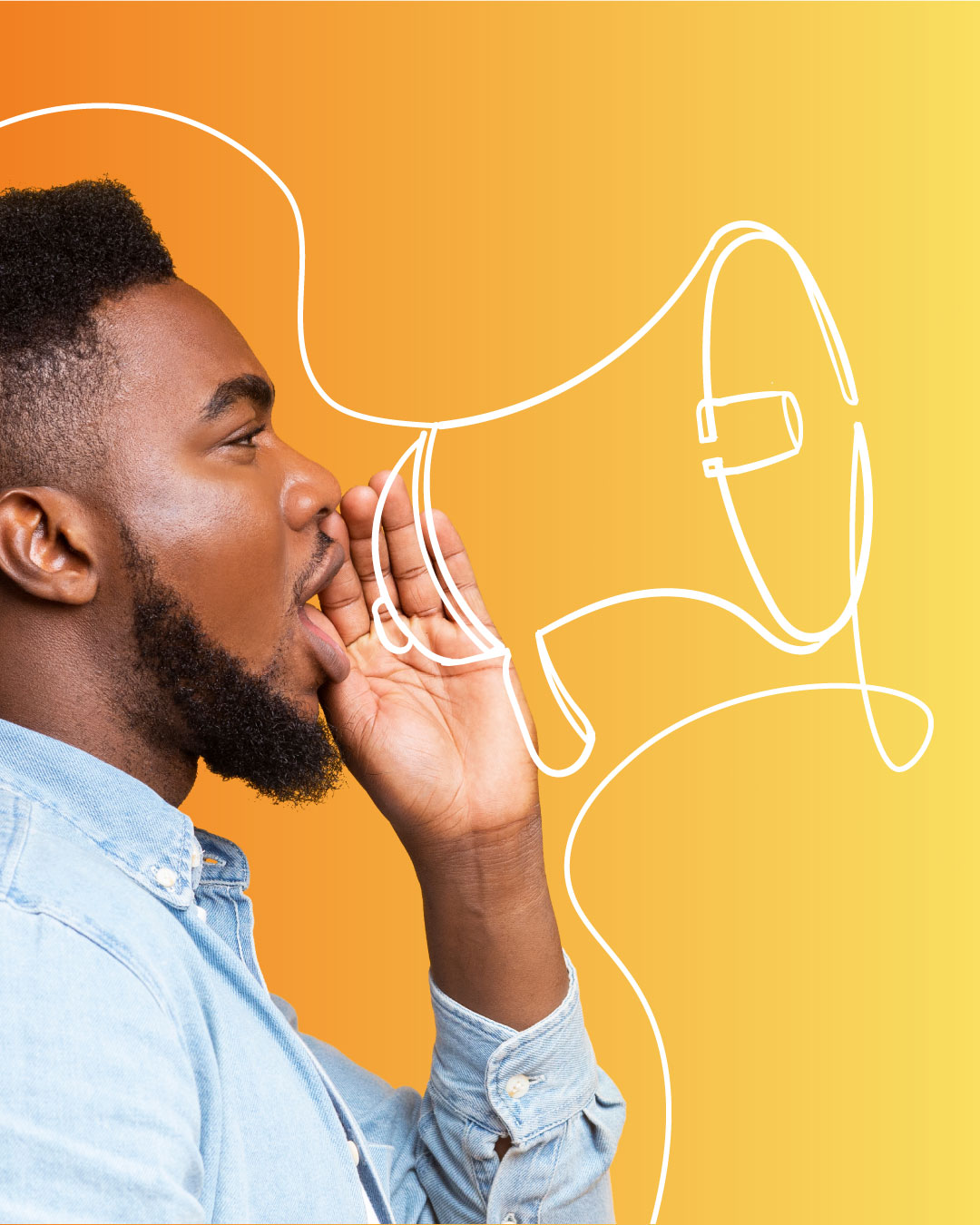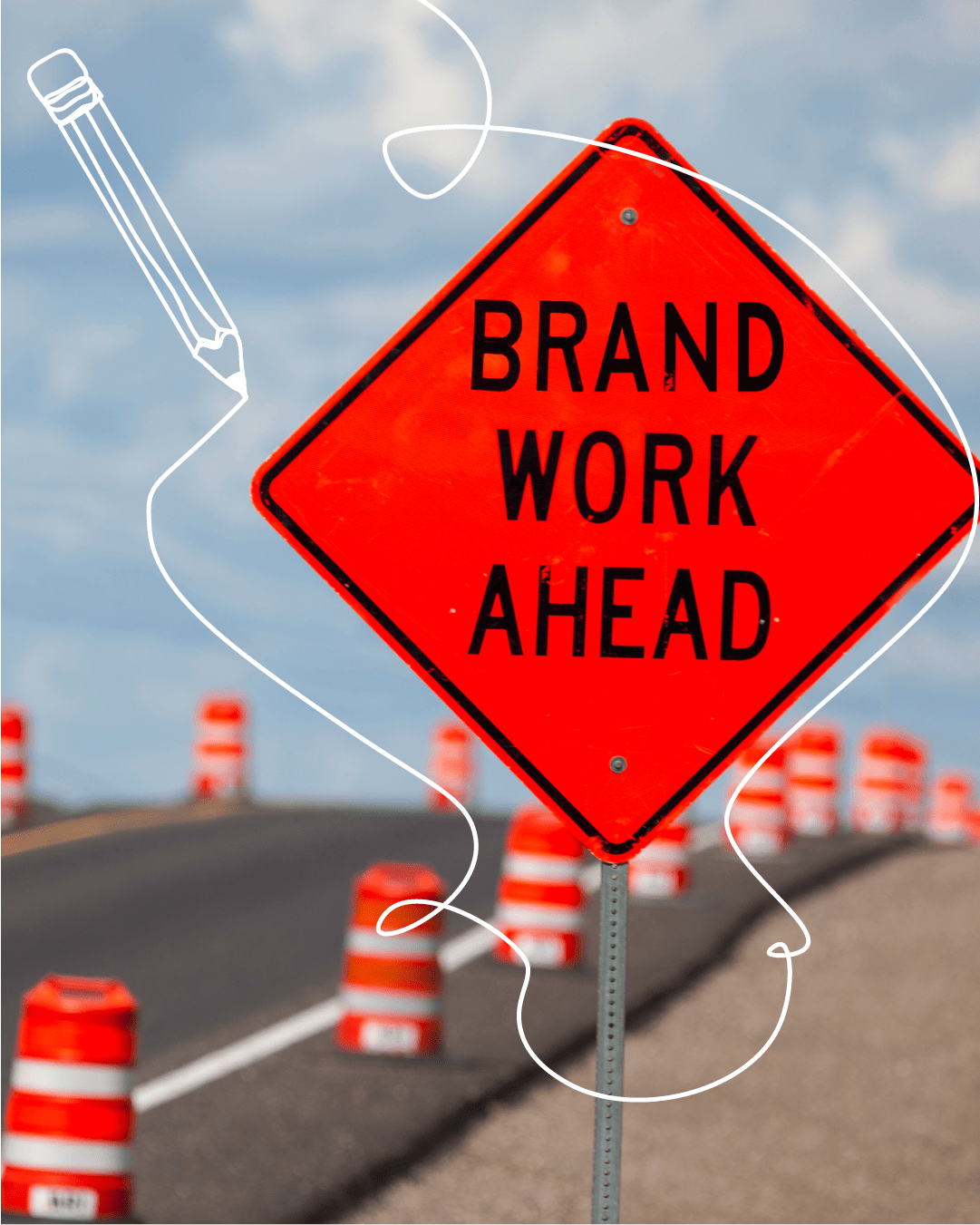In our blog post, “Your Brand is More than a Logo,” we discussed the importance of your brand’s verbal identity. We touched on the distinct verbal style and intentional language you use in blog posts, web copy, social media posts, etc., that align with your brand’s purpose and can be easily recognizable by your audience.
A strong verbal identity can amplify your brand and make it memorable. It should also align with your brand purpose and values, whether that is funny and playful, empathetic and emotional, confident and trustworthy, etc. how you say things should clearly represent what your brand stands for and how you want to be perceived.
A few key elements work together to create a consistent, clear, and authentic verbal identity for your brand.
Brand Name
Your brand name is the opening act of your brand story. They offer a glimpse into who you are and what experience you can offer. It’s the most concise expression of your brand purpose and the most crucial first impression you can have.
Brand Story
Your brand story is key to your verbal identity, describing why your brand exists, what you do, whom you do it for, why it matters, and how you do it differently.
Your brand story should be uniquely you, easy to digest, and relatable to your audience.
Let’s look at some of the core elements of a brand story:
Vision and Mission
A vision statement is a bold, vivid explanation of why your company exists and what impact you want to have long term. A strong vision statement describes your future-facing goals and aspirations. Think of it as your company’s NorthStar.
A mission statement, in contrast, speaks to the here and now. You must concisely describe what your company does, how you do it, and how you will get to where you want to be.
Vision and mission statements go hand and hand with your vision statement setting your destination and your mission statement reflecting the course that will get you there.
A great example of this is LinkedIn:
Vision: Create economic opportunity for every member of the global workforce
Mission: Connect the world’s professionals to make them more productive and successful.
Messaging and Narrative
Your brand story also includes a value proposition, positioning statement, key themes, proof points, and a core motto (aka tagline). These are fundamental pieces of your brand story arc that articulate why you are different, relevant, and meaningful to your audience.
Slacks’ positioning statement
“Slack is the collaboration hub that brings the right people, information, and tools together to get work done. From Fortune 100 companies to corner markets, millions of people worldwide use Slack to connect their teams, unify their systems and drive their business forward.”
Amazon’s positioning statement
“For consumers who want to purchase a wide range of products online with quick delivery, Amazon provides a one-stop online shopping site. Amazon sets itself apart from other online retailers with its customer obsession, passion for innovation, and commitment to operational excellence.”
Brand Voice
Your brand voice is about telling your brand story, expressing your personality, and speaking to your audiences. It’s the words you use, how your sentences flow, and the visual design you use to support those words.
A great brand voice makes you relatable but requires the discipline to be consistent.
Some great examples are:
Nike
Nike’s brand voice is confident and inspirational, as their well-known tagline “Just Do It” exemplifies. They encourage athletes, professional and novice alike, to push themselves, not give up, and celebrate their victories, big or small. This video entitled “What are you working on?” exemplifies that.
The Farmer’s Dog
If you watched this year’s Super Bowl or just caught up on the ads the next day, you most certainly heard about one of the most tear-jerking commercials from The Farmer’s Dog. The ad follows the journey of a puppy and a girl as they grow older together. The Farmer’s Dog brand is about delivering long healthy lives for your dog with fresh, real food. They speak to the bond between an owner and their pet using phrases like “freshly made pet food with simple recipes, guided by science, and driven by love.” With the brand voice being empathetic yet hopeful. That same voice comes through clearly in their ad, their social media posts, and more.
Brand Tone
If brand voice reflects the personality of who is talking, the brand tone is how you speak, depending on context. Brand voice is always consistent, but tone can fluctuate based on the audience and medium.
Think of a rock band. They identify with rock music, dress the part, compose music that is identified as rock music, and may have a lead singer with a recognizable rock rasp to their voice. Who they are as a band is always consistent, but throughout their career, they may experiment with different rock genres – arena rock, pop rock, or hard rock.
That’s similar to how brand voice and tone work. Your voice should be easily identifiable to any audience, but how you speak to one segment or another may vary.
Salesforce


HP


Mailchimp


Grammar and Written Style
To create consistency in writing, many brands set written style guidelines. So regardless of where content is being created or shared, there is a defined style to reinforce who the brand is.
Examples of things to consider including:
- Do you adhere to the AP Stylebook or the Chicago Manual of Style?
- Do you use Oxford (i.e., serial) commas at the end of a list of items in a sentence?
- What abbreviations and acronyms are essential to your business?
- Do you use contractions for a more informal feel?
- How do you write your product names? With caps or sentence case?
- How do you write for inclusivity?
- Etc.
Here are a few nicely written style guides to inspire you:
Bringing all these elements together into a compelling and cohesive verbal identity helps you stand out in a sea of words, connect with your audiences, and offer them new experiences.




